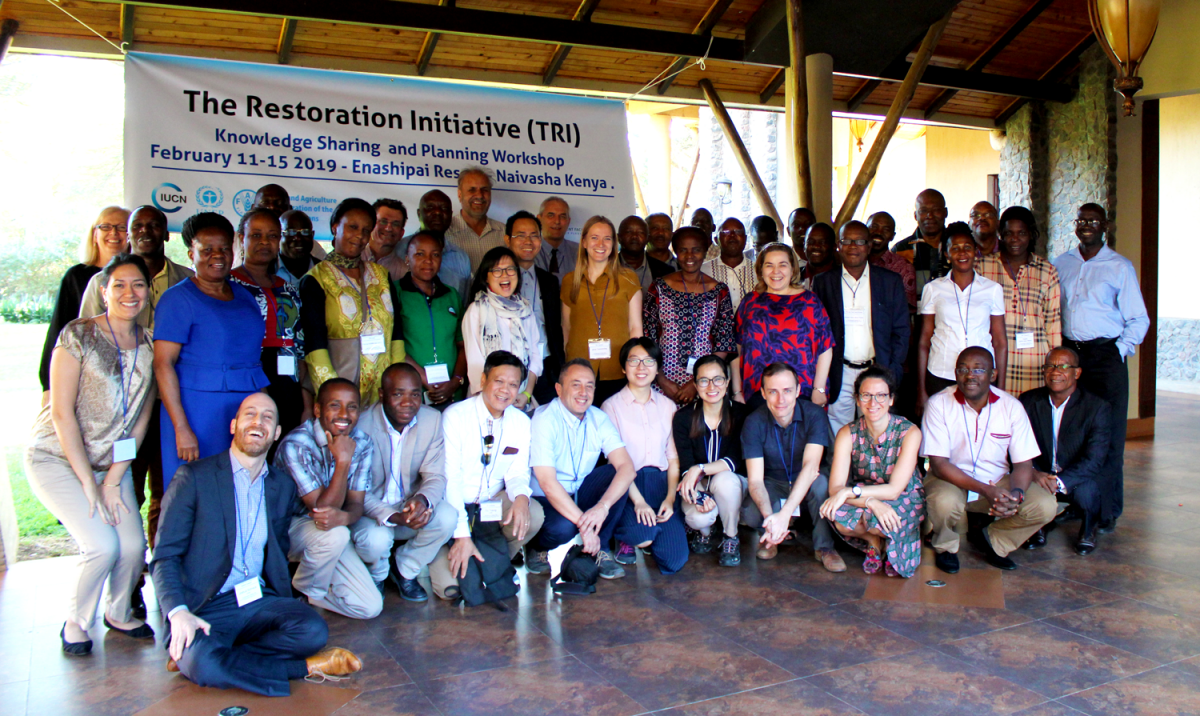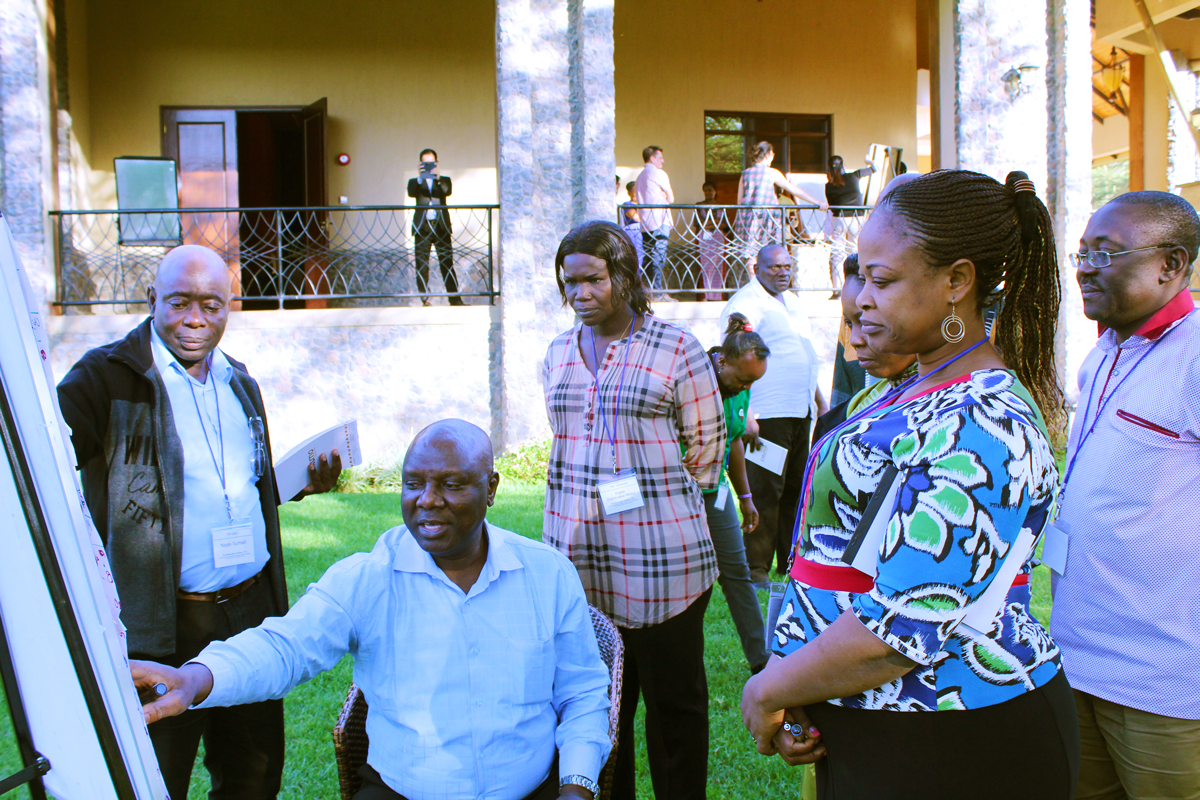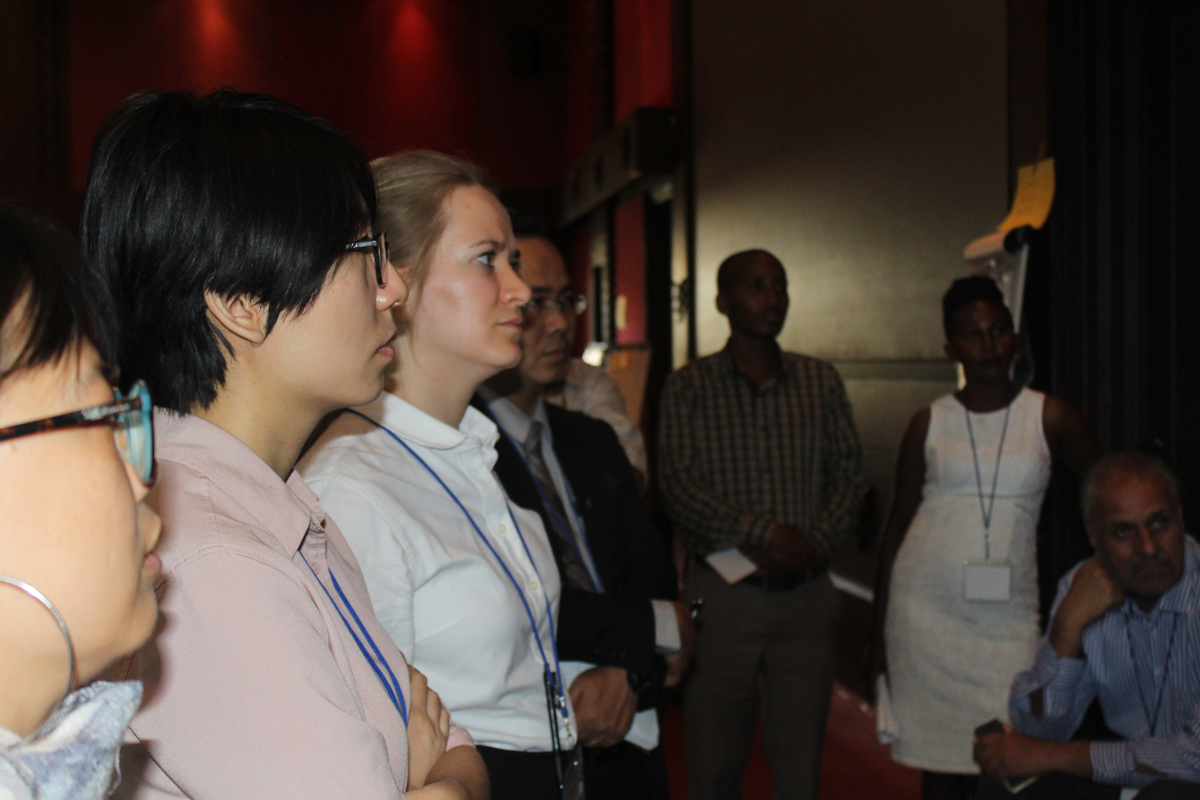The Restoration Initiative: A chance to learn from one another
The largest-to-date Global Environment Facility supported programme to restore degraded lands kicked off in Naivasha, Kenya, where over 50 programme partners gathered for a 5-day knowledge sharing and planning workshop. The workshop offered the first real-world test of the programme’s vision for partnership, and the results are promising.
Nearly three years in the making, The Restoration Initiative (TRI) – a partnership of three Global Environment Fund (GEF) implementing agencies (IUCN, Food and Agriculture Organization of the UN and UN Environment) and ten Asian and African countries with the shared goal of restoring degraded and deforested lands – accelerated programme implementation with a knowledge sharing and planning workshop in Naivasha, Kenya.
Teams from Cameroon, Central African Republic, China, Democratic Republic of Congo, Guinea Bissau, Kenya, Myanmar, Pakistan, Sao Tome and Principe, and Tanzania spent a week together learning about each other’s projects and finding even more common ground than anticipated, bridging any regional, cultural or language differences. They jointly provided clarity on the different kinds of assistance needed from the programme to support their national projects: be it to build capacity to plan and manage forest landscape restoration (FLR); to improve the enabling policy environment in their respective countries for FLR; to mobilise additional funding and investment in FLR; or to discuss global FLR goals like the Bonn Challenge. Perhaps most importantly, attendees identified numerous areas for exchange and partnership going forward.
Examples include work to establish cross-sectoral planning on FLR among ministries that typically operate independently from one another, such as ministries for agriculture, forestry, and water. Other project teams discussed the best techniques for restoration of degraded mangroves and drylands, and how to scale up successful examples of innovative payment-for-ecosystem-services schemes to help finance restoration.
TRI at a glance
- 11 national projects in 10 Asian and African countries; 1 global support project
- 5-year average project length; most projects started in late 2018
- $54 million in GEF grants, $201 million in co-funding
Programmatic thinking
No two TRI country projects take the same approach to restoration. From working with government partners to establish policy on sustainable use of mangroves, to private sector engagement and the business case for FLR, to restoration that incorporates native species of bamboo, to improving the management practices of state forest farms across China, each project was deliberately tailored to match the unique needs and objectives of countries and stakeholders.
However, by bringing together eleven unique national projects from ten countries on two continents that share a common framework for knowledge sharing and support, the initiative offers extensive opportunities for cross-team learning, exchange and partnership – much more than would be available to a group of stand-alone, independent projects. That’s the thinking behind this path-breaking GEF programme.
The benefits of this collective approach were summed up by Faizul Bari, who leads the project team from Pakistan:
By being part of the programme we are getting the experiences of ten countries. And countries where they are more-or-less in the same situation. We can share our experiences with each other. We can benefit from each other’s successful experiences. We can develop mutual tools. So my excitement is also that this is a project which is not in isolation in one country, but it is something where we can have a global effect, which really helps in bringing The Restoration Initiative to the centre.”
Similar sentiments were voiced by Serah Munguti, from the TRI project working in southern Kenya:
We have lot to learn from the bigger programme, from others who have possibly done similar things so that we are not just reinventing the wheel. Also being in a global platform, we expect opportunities to share what we have to share – reaching audiences that we would otherwise not reach if we were working just here in Kenya.”
Learning from local partners
The surrounding district of Naivasha is home to two restoration initiatives, supported by WWF Kenya, that showcase innovative approaches to restoration. The last day of the workshop gave attendees the opportunity to go out into the field and learn first-hand from these two initiatives.
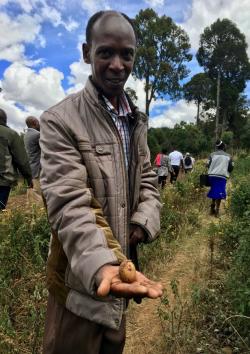 Photo: IUCN / Josh Schneck
Photo: IUCN / Josh Schneck
At the second site, an innovative payment-for-ecosystem services programme has been set up to finance restoration. Margaret, one of the group’s hosts at this site, took up the challenge to secure the steep slopes of her small plot with trees by intercropping, as did 1400 others. Through this collective power of farmers, clean water is again flowing from upstream catchment areas to benefit farmers and businesses downstream, who provide funding to help train and supply communities farming on those slopes with techniques and planting material (e.g., tree seedlings) that reduce sedimentation runoff during rain events.
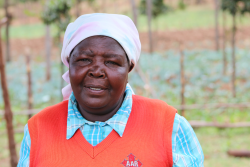 Photo: IUCN / Corbett Nash
Photo: IUCN / Corbett Nash
Both initiatives are products of participatory processes to build consensus, and incentives that mobilize partners to restore degraded lands, an approach which inspired the TRI programme teams and provided them with tangible ideas to build into their respective and unique TRI projects.
Just the beginning
The Restoration Initiative is anticipated to run until early 2023. Along the way, partners hope to build upon increasing political will and public demand for restoration, using the resources that this high-profile, high-opportunity programme affords. It’s still too early to tell what kind of an impact TRI will have, but judging from the success of this workshop, partners have formed a good basis from which to accelerate the challenging work ahead.
— by Josh Schneck and Corbett Nash, IUCN Global Forest & Climate Change Programme
The Restoration Initiative (TRI) is supported by grants from the Global Environment Facility (GEF) and through partner funding. TRI works in ten countries in Africa and Asia where it combines the expertise of national partners with that of three GEF agencies: International Union for Conservation of Nature (IUCN), the Food and Agriculture Organization of the UN (FAO), and the UN Environment Program (UNEP) under a flexible framework that addresses key restoration opportunities.
